Summer is the perfect time to transform your beverage game with the incredible bounty that local farms and gardens provide. Have you ever wondered why that strawberry lemonade tastes so much better when made with berries picked just hours ago? Or why does your mint mojito have that perfect aromatic punch when the herbs come from a nearby farm? The secret lies in understanding how to harness the power of local ingredients to create drinks that taste amazing and support your community and the environment.
Using local ingredients for summer drinks isn’t just a trendy concept – it’s a practical approach that delivers superior flavor while creating positive impacts far beyond your glass. When you choose locally sourced herbs, fruits, and vegetables for your beverages, you’re accessing ingredients at their peak freshness, supporting local farmers, and reducing your environmental footprint all in one refreshing sip.
Why Local Ingredients Transform Your Summer Beverages
The Flavor Advantage of Locally Sourced Ingredients
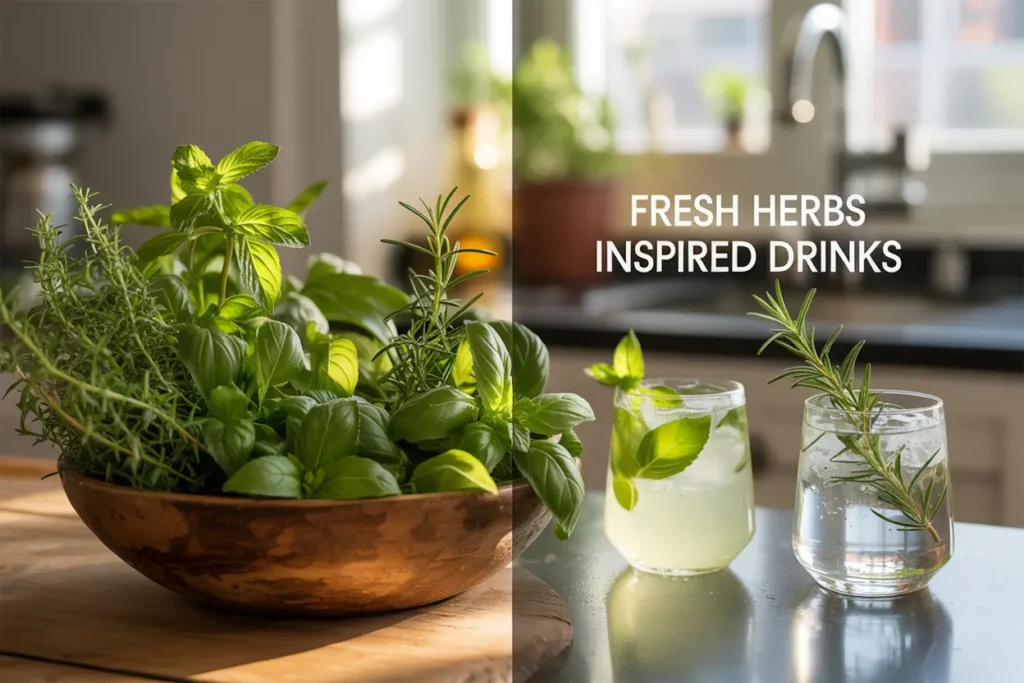
Local ingredients bring an unmatched flavor intensity that you simply cannot get from produce that has traveled thousands of miles. When fruits and herbs are harvested at peak ripeness and used within days (or even hours), they retain maximum flavor compounds, natural sugars, and aromatic oils that gradually diminish during long transport and storage periods.
Think about the difference between a tomato that ripened on the vine in nearby soil versus one that was picked green and shipped across the country. The same principle applies to every ingredient in your summer drinks. Local berries maintain their bright acidity and natural sweetness, while locally grown herbs like basil and mint retain potent essential oils that create those perfect flavor notes in your beverages.
The concept of terroir – the unique characteristics that geography, climate, and soil impart to produce – plays a significant role in flavor development. Local ingredients carry the distinct taste profile of your region, creating drinks that are truly unique to your area. This regional character adds depth and complexity that mass-produced ingredients simply cannot match.
| Flavor Factor | Local Ingredients | Shipped Ingredients |
|---|---|---|
| Peak Ripeness | Harvested at optimal maturity | Often picked early for shipping |
| Time to Use | Hours to days | Weeks to months |
| Nutritional Content | Maximum vitamin/mineral content | Degraded during transport |
| Aromatic Compounds | Fully developed | Partially lost |
| Natural Sugars | Peak concentration | Converted to starches |
Supporting Your Local Community Through Drink Choices
Test Your Local Ingredient Knowledge
1. Which herb should be stored at room temperature rather than refrigerated?
2. What’s the typical radius for considering ingredients “local”?
3. Which fruit produces ethylene gas that can cause other produce to ripen faster?
Every dollar spent on local ingredients creates a ripple effect throughout your community. Local farmers and producers reinvest their earnings locally, creating jobs and supporting other community businesses. This economic multiplier effect means your ingredient purchases have far-reaching positive impacts beyond the immediate transaction.
Building relationships with local growers also provides educational opportunities. Many farmers are eager to share knowledge about their growing practices, seasonal varieties, and optimal usage suggestions. These conversations can transform your understanding of ingredients and inspire new drink combinations you might never have considered.
When you support local beverage suppliers, you’re also helping preserve agricultural land and traditional farming knowledge in your region. Small-scale farmers often grow diverse crops and maintain heirloom varieties that would otherwise disappear from the food system.
Environmental Benefits of Local Sourcing

Local ingredient sourcing dramatically reduces the carbon footprint of your summer drinks. Transportation accounts for a significant portion of food-related greenhouse gas emissions, so choosing ingredients grown within 100 miles of your location can cut these emissions by up to 90%.
Local farming operations typically use more sustainable practices than large industrial agriculture. Smaller farms often employ crop rotation, natural pest management, and soil conservation techniques that benefit the local ecosystem. By supporting these practices through your purchasing decisions, you’re contributing to environmental stewardship in your area.
Water usage is another important consideration. Local ingredients require less packaging and processing, reducing overall water consumption in the supply chain. Many local farms also implement water conservation techniques that are impractical for large-scale operations.
Understanding Local Ingredient Seasonality
Spring-to-Summer Transition Ingredients (April-May)
The transition from spring to summer brings exciting opportunities for early-season beverages. Rhubarb offers tart complexity perfect for shrubs and flavored waters. Early strawberries provide delicate sweetness that pairs beautifully with light herbs like lemon balm and early mint varieties.
Spring herbs like chives, early parsley, and tender basil shoots offer subtle flavors that work wonderfully in refreshing mocktails. These ingredients set the foundation for your summer drink repertoire while providing unique flavors unavailable later in the season.
| Ingredient | Peak Season | Drink Applications | Storage Tips |
|---|---|---|---|
| Rhubarb | April-June | Shrubs, flavored waters, syrups | Refrigerate stalks for 1-2 weeks |
| Early Strawberries | May-June | Infusions, muddled drinks | Use within 3-5 days |
| Spring Herbs | April-May | Light mocktails, herbal waters | Wrap in damp paper towels |
| Asparagus | April-June | Savory beverages, vegetable juices | Stand in water, refrigerate |
Peak Summer Local Produce for Drinks (June-August)
Summer’s abundance provides the widest variety of ingredients for creative beverages. Stone fruits like peaches, nectarines, and apricots offer natural sweetness and complex flavors that work in both alcoholic and non-alcoholic preparations. Their high natural sugar content makes them excellent for fermented beverages and natural syrups.
Berries reach their peak during these months, with strawberries, raspberries, blackberries, and blueberries offering different flavor profiles and color options. Each berry type brings unique characteristics – strawberries provide gentle sweetness, raspberries add tartness, blackberries contribute earthiness, and blueberries offer subtle complexity.
Summer herbs explode with flavor during peak growing season. Basil varieties range from sweet Italian to spicy Thai, each bringing distinct characteristics to beverages. Mint varieties include spearmint, peppermint, chocolate mint, and apple mint, offering diverse flavor options for creative summer cocktail pairings.
Late Summer Harvest Opportunities (August-September)

Late summer ingredients often have concentrated flavors and higher sugar content, making them perfect for preserved preparations that extend the season. Early apples provide crisp acidity that balances rich summer flavors, while late berries offer intense sweetness perfect for syrups and concentrates.
This period is ideal for learning preservation techniques that allow you to enjoy local flavors year-round. Understanding how to properly dehydrate herbs, freeze fruit purées, and create concentrated syrups ensures your local ingredient program continues even when fresh options become limited.
Finding Local Ingredient Sources Beyond Farmers Markets
Farmers Markets: Your Primary Resource
Farmers markets remain the best starting point for local ingredient sourcing, but maximizing their potential requires strategy. Arrive early for the best selection, but also visit near closing time when vendors often offer discounts on remaining inventory. Building relationships with specific vendors can lead to advance notices about special varieties and seasonal availability.
Ask vendors about their growing practices, harvest schedules, and storage recommendations. Many farmers can provide guidance on selecting ingredients at different ripeness levels for immediate use versus longer storage. Some vendors accept special orders for larger quantities or specific varieties not typically brought to market.
Understanding market seasonality helps plan your purchasing strategy. Early season items command premium prices but offer unique flavors. Mid-season availability provides the best value, while end-of-season purchases are perfect for preservation projects.
Local Farms and U-Pick Operations
Direct farm relationships often provide the freshest ingredients at competitive prices. Many farms offer u-pick operations that allow you to select exactly what you want while enjoying the experience of harvesting your own ingredients. This hands-on approach also provides valuable education about proper selection and handling techniques.
Establishing relationships with local farms can lead to opportunities for bulk purchasing and advance ordering. Some farms offer CSA (Community Supported Agriculture) programs specifically designed for restaurant and hospitality businesses, which can be adapted for serious home beverage enthusiasts.
Farm visits also provide insight into growing practices and seasonal planning. Understanding when specific ingredients will be available helps you plan your beverage menu and preservation activities in advance.

Community Supported Agriculture (CSA) Programs
CSA programs provide regular deliveries of seasonal produce, ensuring consistent access to local ingredients throughout the growing season. While traditional CSAs focus on vegetables, many now offer herb shares or fruit additions that are perfect for beverage applications.
Some CSAs allow members to customize their shares or swap items, making it easier to get ingredients specifically suited for drink preparation. The regular delivery schedule also encourages experimentation with new ingredients you might not typically purchase.
Alternative Local Sources and Hidden Gems
Food cooperatives often source from local farms and may offer better prices than farmers markets. Local restaurants sometimes sell excess ingredients or can provide information about their suppliers. Specialty stores focusing on local products may carry preserved or processed local ingredients like fruit syrups and herbal extracts.
For the more adventurous, guided foraging tours can introduce you to wild ingredients like elderflowers, wild mint, and edible flowers. However, proper identification and safety knowledge are essential for any foraging activities.
Essential Local Ingredients for Summer Drinks
What’s your biggest challenge in sourcing local ingredients?
Fresh Herbs: Building Your Flavor Foundation
Herbs form the backbone of sophisticated beverage programs. Understanding different herb varieties and their flavor profiles allows you to create complex, layered drinks that change and develop as you sip them.
Mint varieties each offer distinct characteristics. Spearmint provides classic coolness, peppermint adds intensity, chocolate mint contributes subtle richness, and apple mint offers fruity notes. Growing or sourcing multiple mint varieties allows for creative blending and seasonal variation in your drinks.
Basil extends far beyond the common sweet variety. Thai basil brings spicy, anise-like notes perfect for exotic combinations. Purple basil adds color and subtle differences in flavor. Lemon basil provides citrus notes without adding acidic liquid to your drinks.
| Herb Type | Flavor Profile | Best Drink Applications | Harvest Timing |
|---|---|---|---|
| Sweet Basil | Peppery, sweet, aromatic | Fruit combinations, Italian-inspired drinks | Morning after dew dries |
| Thai Basil | Spicy, anise-like | Exotic combinations, spicy drinks | Before flowering |
| Spearmint | Cool, refreshing | Classic mojitos, fruit waters | Regular harvesting encourages growth |
| Chocolate Mint | Rich, subtle chocolate notes | Dessert drinks, rich combinations | Best in cooler weather |
| Rosemary | Pine-like, woody | Sophisticated cocktails, savory drinks | Year-round availability |
Seasonal Fruits: The Heart of Summer Beverages
Understanding fruit characteristics helps you choose the right applications for each variety. High-acid fruits like tart cherries and cranberries work well in small quantities to brighten other flavors. High-sugar fruits like ripe peaches and sweet strawberries can carry drinks with minimal additional sweetening.
Stone fruits require careful handling but offer incredible flavor potential. Their natural enzymes continue working after harvest, so timing their use correctly is crucial. Slightly underripe stone fruits work well for longer infusions, while fully ripe fruits are best used immediately for maximum impact.
Berries each bring unique characteristics beyond flavor. Strawberries have high water content and delicate flavor. Raspberries provide intense flavor and beautiful color but can be overpowering. Blackberries offer earthy complexity and deep color. Blueberries contribute subtle flavor and natural antioxidants.
Understanding how fruits behave in different applications helps you choose the right preparation method. Some fruits muddle well, others work better as purées, and some are perfect for long infusions. Learning these techniques elevates your beverage game significantly.
Vegetables in Drinks: Unexpected Flavor Enhancers
Vegetables offer exciting possibilities for unique and sophisticated beverages. Cucumbers provide refreshing coolness and subtle flavor that works in both sweet and savory applications. Their high water content makes them perfect for infusions and spa-style waters.
Tomatoes, technically fruits, offer umami richness that creates complex, satisfying drinks. Different tomato varieties provide different flavor profiles - cherry tomatoes add sweetness, while heirloom varieties contribute complex, wine-like notes.
Peppers range from sweet bell varieties to mildly spicy options that add warmth without overwhelming heat. Roasted peppers contribute smoky complexity, while raw peppers provide fresh, crisp notes.
Root vegetables like beets and carrots offer earthiness and natural sweetness. Their intense flavors work well in small quantities to add depth and complexity to fruit-forward drinks.
Edible Flowers and Their Unique Profiles
Edible flowers provide both flavor and visual appeal that elevates any beverage presentation. However, proper identification and sourcing are crucial for safety. Only use flowers specifically grown for culinary use, never flowers from florists or garden centers that may have been treated with chemicals.
Lavender offers floral notes that pair beautifully with citrus and stone fruits. Use sparingly, as its intense flavor can quickly become overpowering. Elderflowers provide delicate, honey-like sweetness perfect for light, refreshing drinks.
Rose petals contribute subtle floral notes and romantic appeal. Different rose varieties offer different flavor intensities, so experimentation helps determine the right amount for your taste preferences.
Hibiscus flowers provide tart, cranberry-like flavor and stunning deep red color. They work well in both hot and cold preparations and are traditional in many global beverage cultures.
Preparation and Storage Techniques for Maximum Freshness
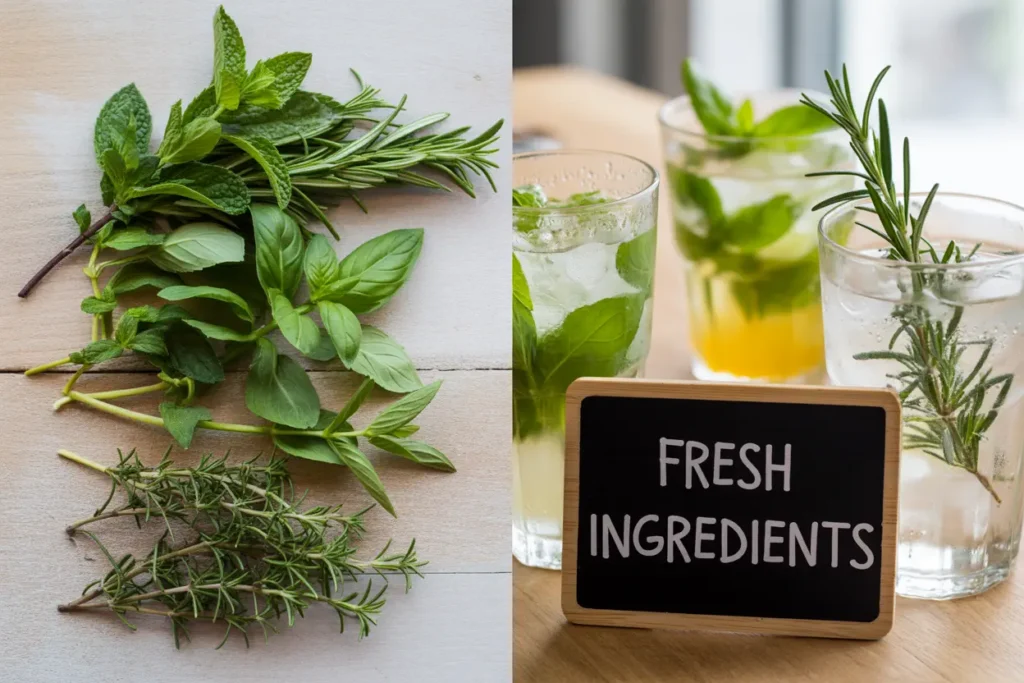
Proper Washing and Handling of Local Produce
Local ingredients require careful handling to maintain quality and ensure safety. Start with proper washing techniques that remove soil and potential contaminants without damaging delicate ingredients. Herbs benefit from gentle rinsing in cool water, while sturdier ingredients can handle more thorough washing.
Understanding the difference between organic and conventional growing practices helps determine appropriate washing methods. Organic ingredients may require more attention to soil removal, while conventional ingredients need thorough washing to remove potential pesticide residues.
Timing your washing is crucial for maintaining quality. Herbs should be washed just before use to prevent premature deterioration. Fruits can often be washed upon purchase and properly stored, but delicate berries are best washed immediately before preparation.
Storage Methods to Maximize Freshness and Shelf Life
Proper storage significantly extends the usability of local ingredients. Different ingredients require different storage conditions - some prefer high humidity, others need air circulation, and many are sensitive to ethylene gas produced by certain fruits.
Herbs generally prefer cool, humid conditions but shouldn't be stored wet. Wrapping clean, slightly damp herbs in paper towels and storing them in perforated plastic bags often provides optimal conditions. Some herbs, like basil, prefer room temperature storage and may be damaged by refrigeration.
Understanding ethylene sensitivity helps prevent premature ripening and spoilage. Ethylene-producing fruits like apples and tomatoes should be stored separately from ethylene-sensitive ingredients like herbs and leafy greens.
| Storage Method | Best For | Duration | Key Tips |
|---|---|---|---|
| Refrigerator (high humidity) | Leafy herbs, berries | 3-7 days | Use perforated bags |
| Refrigerator (low humidity) | Stone fruits, apples | 1-2 weeks | Separate from ethylene producers |
| Room temperature | Basil, tomatoes | 2-5 days | Away from direct sunlight |
| Freezer | Prepared purées, syrups | 6-12 months | Label with dates |
Preparation Timing for Maximum Flavor Impact
Benefits of Using Local Ingredients
Understanding when to prepare different ingredients optimizes flavor extraction and prevents deterioration. Some ingredients benefit from advance preparation that allows flavors to develop, while others are best prepared immediately before use.
Herb-infused syrups and extracts often improve with time as flavors meld and develop. These preparations can be made days or even weeks in advance, allowing you to have flavor bases ready for quick drink assembly.
Fresh fruit preparations generally benefit from minimal processing time. Muddled fruits release maximum flavor when prepared immediately before use. However, some applications like fruit-infused waters benefit from longer steeping times that allow gradual flavor extraction.
Local Ingredient Drink Categories and Applications
Refreshing Water-Based Beverages and Infusions
Water-based drinks showcase ingredient flavors without competition from alcohol or heavy sweeteners. These beverages are perfect for highlighting subtle flavors and maintaining proper hydration during summer activities.
Simple fruit and herb infusions provide endless variety with minimal effort. The key is understanding extraction times - delicate herbs need only 10-15 minutes, while hardier ingredients can infuse for hours. Combining ingredients with different extraction rates allows you to build complex flavors gradually.
Spa waters elevate simple infusions with sophisticated combinations like cucumber-mint-lime or strawberry-basil-lemon. These combinations provide both flavor complexity and visual appeal that makes ordinary water feel special.
Fermented beverages like kombucha and water kefir can incorporate local ingredients for unique, probiotic-rich drinks. These fermentation processes create complex flavors and beneficial bacteria that support digestive health.
Fruit-Forward Combinations and Pairings
Understanding fruit flavor profiles and complementary pairings creates sophisticated drinks that taste professionally crafted. Stone fruits pair beautifully with herbs like thyme and rosemary, while berries complement mint and basil combinations.
Balancing sweetness and acidity creates drinks that are refreshing rather than cloying. Using naturally tart fruits like cranberries or adding citrus elements helps balance sweet fruits and creates more complex flavor profiles.
Natural sweeteners from local sources like honey or maple syrup complement fruit flavors better than refined sugars. These sweeteners also add their own subtle flavors that enhance rather than mask ingredient characteristics.
Herb-Infused Creations and Techniques
Mastering basic mixology techniques for herb incorporation dramatically expands your beverage possibilities. Muddling releases essential oils and creates immediate flavor impact. Simple syrups allow you to capture herb flavors in shelf-stable preparations.
Different herbs require different extraction methods. Delicate herbs like mint bruise easily and release bitter compounds if over-processed. Hardier herbs like rosemary can handle more aggressive extraction methods and longer infusion times.
Layering herb flavors creates complexity that develops as you drink. Starting with subtle herbs and adding stronger flavors creates drinks that change and evolve, keeping them interesting from first sip to last.
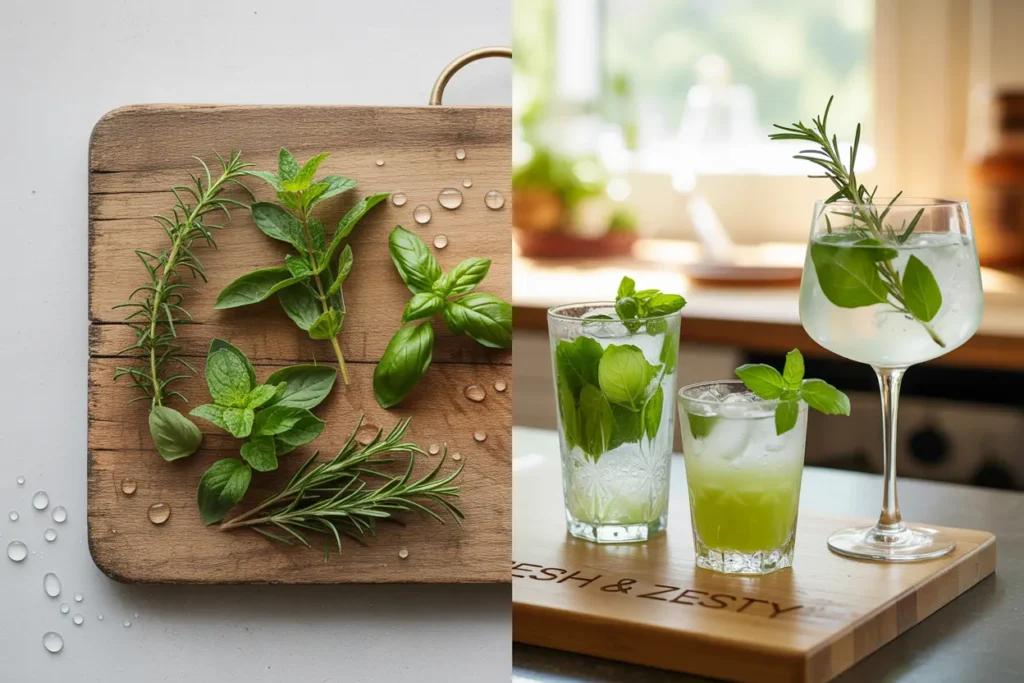
Vegetable-Based Refreshers and Innovations
Vegetable-based drinks offer unique flavors and nutritional benefits that fruit-based drinks cannot provide. Cucumber provides cooling properties perfect for hot weather, while tomato-based drinks offer savory satisfaction.
Green drinks incorporating leafy vegetables like spinach or kale can be balanced with fruits and herbs to create nutritious beverages that taste great. The key is finding the right ratios that highlight positive flavors while masking any bitter or earthy notes.
Savory drink elements like herbs, spices, and vegetable juices create sophisticated alternatives to sweet beverages. These drinks work well as meal accompaniments and provide interesting alternatives for guests who prefer savory flavors.
Cost Analysis and Budget Considerations
Comparing Local vs. Store-Bought Ingredient Costs
While local ingredients may initially appear more expensive, comprehensive cost analysis often reveals better value. Local ingredients typically offer higher quality, better flavor, and longer storage life, providing more value per dollar spent.
Seasonal pricing creates opportunities for significant savings. Purchasing ingredients at peak season allows you to enjoy premium quality at lower prices. Understanding seasonal patterns helps you plan purchases and preservation activities for maximum value.
The true cost comparison must include quality factors. Local ingredients often provide more flavor per ounce, meaning you can use smaller quantities to achieve the same flavor impact. This efficiency can offset higher per-unit costs.
| Cost Factor | Local Ingredients | Store-Bought | Value Analysis |
|---|---|---|---|
| Initial Price | Often higher | Lower upfront cost | Quality vs. quantity consideration |
| Flavor Intensity | Higher concentration | More product needed | Better cost per flavor unit |
| Storage Life | Longer when fresh | Already partially deteriorated | Reduced waste costs |
| Community Impact | Local economic benefit | No local benefit | Intangible value added |
Bulk Purchasing and Preservation Strategies
Buying ingredients in larger quantities during peak season provides significant cost savings while ensuring access to premium quality. However, successful bulk purchasing requires proper preservation techniques and storage capabilities.
Group purchasing with friends or neighbors can provide access to wholesale pricing while sharing preservation responsibilities. Many farms offer discounts for larger orders, making group buying particularly attractive for expensive items like organic berries.
Understanding preservation techniques allows you to take advantage of bulk pricing while extending ingredient availability. Learning to properly freeze fruits, dehydrate herbs, and create shelf-stable preparations maximizes your investment in local ingredients.
Cost-Effective Local Sourcing Tips and Tricks
Building relationships with vendors often leads to opportunities for savings. Many farmers are willing to discount slightly imperfect produce or end-of-market inventory. These "seconds" often work perfectly for drink applications where appearance is less critical.
Seasonal planning allows you to take advantage of peak availability and lowest prices. Understanding what ingredients will be available when helps you plan preservation activities and stock up during optimal periods.
Some vendors offer loyalty programs or regular customer discounts. Establishing yourself as a reliable customer who understands seasonal availability can lead to special pricing and advance notice of exceptional items.
Safety and Quality Considerations
Identifying Safe and Reliable Local Sources
Establishing trust with local suppliers requires understanding their growing and handling practices. Ask about water sources, pest management techniques, and harvesting methods. Reliable suppliers are usually happy to discuss their practices and may offer farm visits.
Understanding organic certification helps you make informed decisions about ingredient sourcing. While organic certification provides important assurances, many small local farms use organic practices without formal certification due to cost considerations.
Building relationships with knowledgeable vendors provides ongoing education about proper selection and handling. Experienced farmers can teach you to identify optimal ripeness, proper storage techniques, and signs of quality degradation.
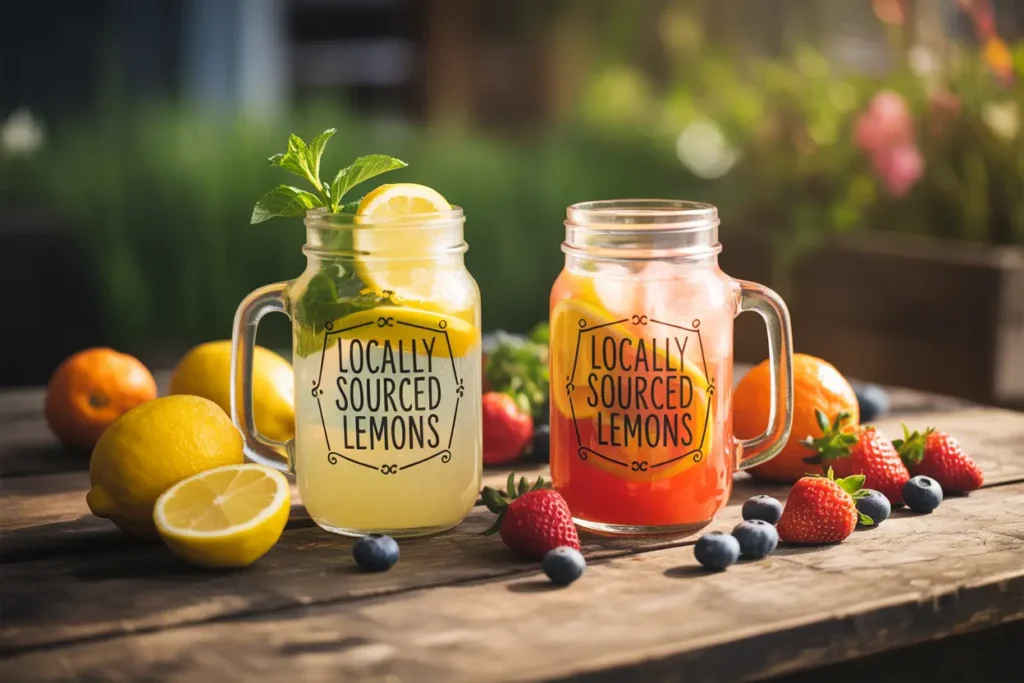
Organic vs. Conventional Local Options
The choice between organic and conventional local ingredients involves balancing cost, availability, and personal preferences. Organic ingredients avoid synthetic pesticides but may be more expensive and less readily available.
Understanding the "Dirty Dozen" and "Clean Fifteen" lists helps prioritize organic purchases for items with higher pesticide residues while saving money on ingredients with lower contamination risks.
Local conventional farmers often use fewer chemicals than large-scale operations and may be willing to discuss their specific practices. Some farmers use integrated pest management techniques that minimize chemical inputs while maintaining productivity.
Proper Sanitization and Food Safety Practices
Developing consistent sanitization practices prevents foodborne illness and maintains ingredient quality. This includes proper hand washing, clean preparation surfaces, and appropriate ingredient handling techniques.
Understanding cross-contamination risks helps you develop safe preparation practices. Using separate cutting boards for different ingredients and properly sanitizing tools prevents contamination between ingredients.
Storage safety requires understanding temperature control, contamination prevention, and signs of spoilage. Proper labeling and rotation ensure you use ingredients while they're safe and maintain optimal quality.
Building Long-Term Relationships with Local Suppliers
Communicating Effectively with Farmers and Vendors
Successful supplier relationships begin with clear communication about your needs and expectations. Being specific about quantities, timing, and quality requirements helps suppliers provide better service while building mutual understanding.
Understanding farming realities helps you communicate more effectively with suppliers. Weather, pests, and other factors beyond farmer control affect availability and quality. Flexibility and understanding build stronger relationships that benefit both parties.
Providing feedback about quality and satisfaction helps suppliers understand your needs while demonstrating your knowledge and commitment to the relationship. Constructive feedback delivered respectfully strengthens partnerships over time.
Seasonal Planning and Pre-Ordering Strategies
Working with suppliers to understand their planting and harvest schedules allows you to plan your ingredient needs in advance. This planning benefits both parties by providing farmers with market predictability and ensuring your access to desired ingredients.
Pre-ordering popular or limited items ensures availability while helping farmers plan their production. Many suppliers offer pricing advantages for advance orders that provide them with guaranteed sales.
Understanding that plans may change due to weather and growing conditions helps maintain positive relationships when modifications become necessary. Flexibility and understanding create partnerships that work for everyone involved.
Creating Mutually Beneficial Long-Term Partnerships
Developing exclusive relationships with suppliers can provide access to special varieties, advance notice of availability, and preferential pricing. These relationships require commitment and understanding from both parties.
Supporting suppliers through challenging seasons and being understanding about quality variations builds loyalty that pays dividends during peak seasons. Suppliers remember customers who support them consistently.
Promoting your suppliers through social media and word-of-mouth recommendations provides valuable marketing support that strengthens your relationship while supporting their business growth.
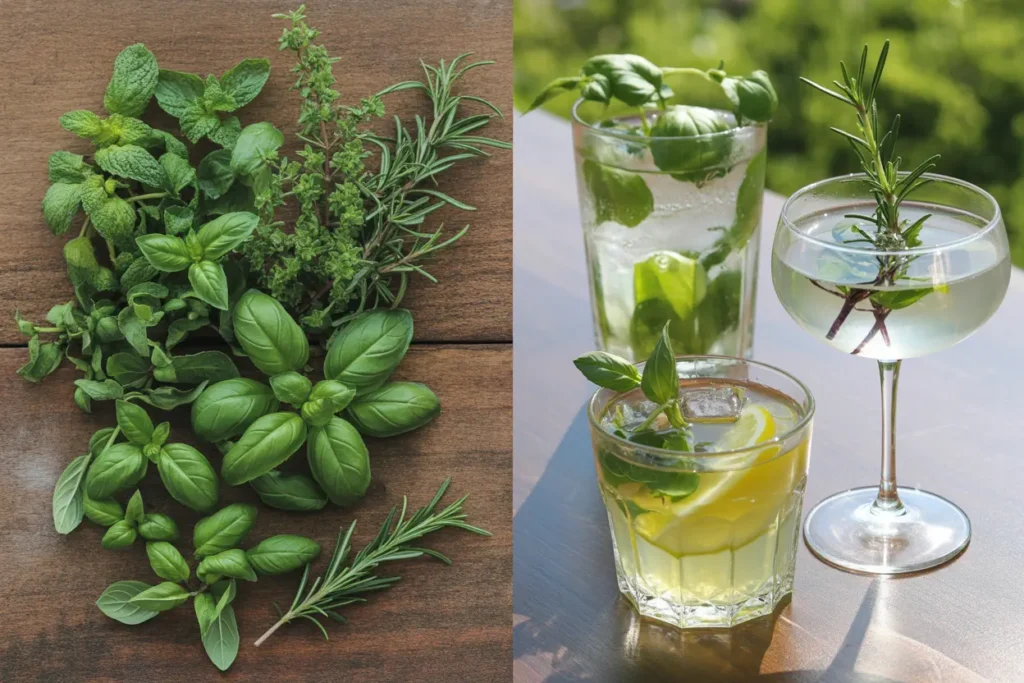
Community Impact and Social Responsibility
Economic Impact of Local Purchasing Decisions
Every dollar spent on local ingredients creates a multiplier effect that benefits the entire community. Local farmers and producers reinvest their earnings locally, supporting other businesses and creating jobs throughout the region.
Supporting local agriculture helps preserve farmland and agricultural knowledge in your area. Small farms often maintain biodiversity through crop rotation and heirloom variety preservation that benefits the entire food system.
Understanding the economic impact of your purchasing decisions helps you make choices that align with your values while enjoying superior ingredients for your summer beverages.
Educational Opportunities and Community Engagement
Building relationships with local suppliers provides ongoing education about agriculture, seasonality, and food systems. This knowledge enhances your appreciation for ingredients while improving your ability to select and use them effectively.
Many suppliers offer farm visits, classes, or special events that provide deeper understanding of growing practices and seasonal rhythms. These experiences enrich your connection to your food while supporting local agricultural education.
Sharing your knowledge about local ingredients and suppliers helps build community awareness and support for local agriculture. Your enthusiasm and expertise can inspire others to explore local ingredient options.
Conclusion
Embracing local ingredients for your summer drinks transforms ordinary beverages into extraordinary experiences while creating positive impacts throughout your community. The superior flavor, environmental benefits, and social connections that come from choosing local ingredients make this approach rewarding on multiple levels.
Whether you're just beginning to explore local ingredient options or looking to deepen your existing relationships with suppliers, the principles and techniques outlined here provide a foundation for success. Remember that building a local ingredient program is a journey that develops over time as you learn about seasonal patterns, supplier relationships, and preservation techniques.
Key Takeaways for Success: • Start small with one or two reliable suppliers and gradually expand your network • Learn seasonal patterns in your area to optimize purchasing and preservation timing • Develop proper storage and handling techniques to maximize ingredient quality and value • Build authentic relationships with suppliers based on mutual respect and understanding • Share your knowledge and enthusiasm to support local agricultural communities
The investment in time and effort required to source local ingredients pays dividends in flavor, community impact, and personal satisfaction. Your summer drinks will taste better, your community will benefit from your support, and you'll develop valuable knowledge and relationships that enhance every aspect of your ingredient sourcing.
Whether you're creating simple infused waters or sophisticated summer cocktail pairings, local ingredients provide the foundation for beverages that truly capture the essence of summer while supporting the people and places that make your community special.
Frequently Asked Questions
Q: How much more expensive are local ingredients compared to store-bought options? A: Local ingredients often cost 10-30% more initially, but their superior quality and flavor intensity mean you often need smaller quantities. When factoring in reduced waste and better taste, the cost difference is often minimal. During peak season, local ingredients can actually be cheaper than store-bought options.
Q: How do I know if local ingredients are safe to use in drinks? A: Choose reputable suppliers who can discuss their growing and handling practices. Ask about water sources, pest management, and harvest methods. Look for vendors at established farmers' markets or certified operations. Proper washing and handling techniques are essential regardless of source.
Q: What's the best way to preserve local ingredients for year-round use? A: Different ingredients require different preservation methods. Herbs can be frozen in ice cubes or dried for teas. Fruits work well frozen as purées or made into syrups. Fermentation and dehydration are also excellent options. The key is processing ingredients at peak ripeness for maximum flavor retention.
Q: How far in advance should I plan my local ingredient purchases? A: Start planning 2-3 months ahead for seasonal items. Build relationships with suppliers in early spring to understand their planting schedules. For popular items like berries, consider pre-ordering to ensure availability during peak season.
Q: Can I use local ingredients if I live in an urban area? A: Absolutely! Urban farmers markets, rooftop farms, community gardens, and CSA programs provide excellent local ingredient access. Many cities also have food co-ops and specialty stores that source from nearby farms. Container gardening can provide fresh herbs even in small spaces.


Pingback: Summer Drink Trends 2025: The Ultimate Guide That Will Transform Your Events - Whaley Cooks
Pingback: Mocktail Mixology Basics: Fail Proof Art of Non-Alcoholic Drinks - Whaley Cooks